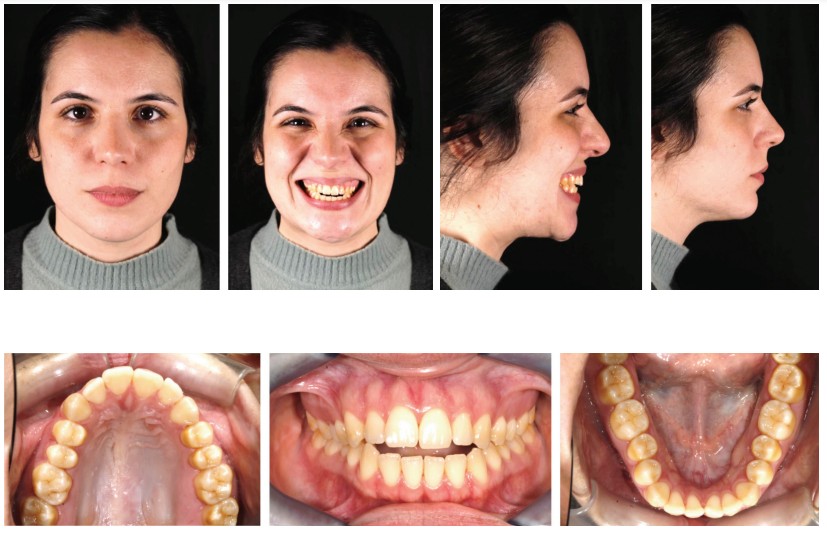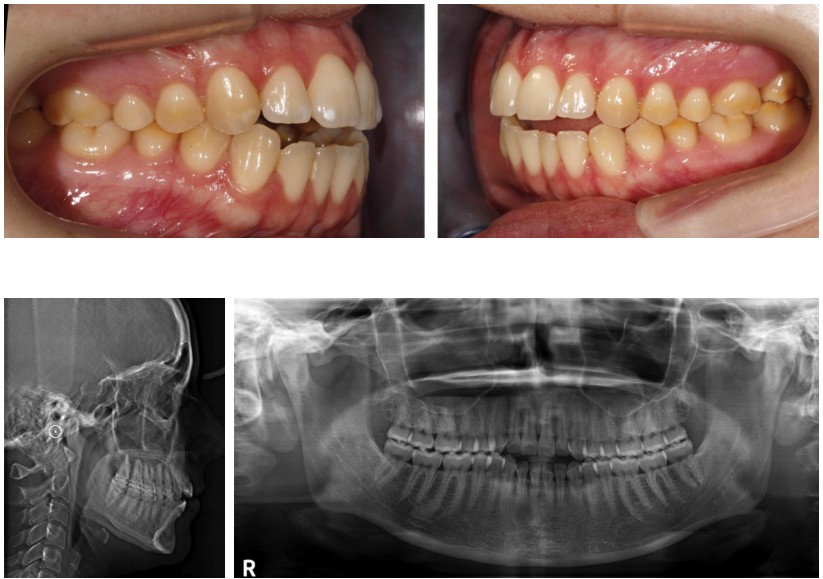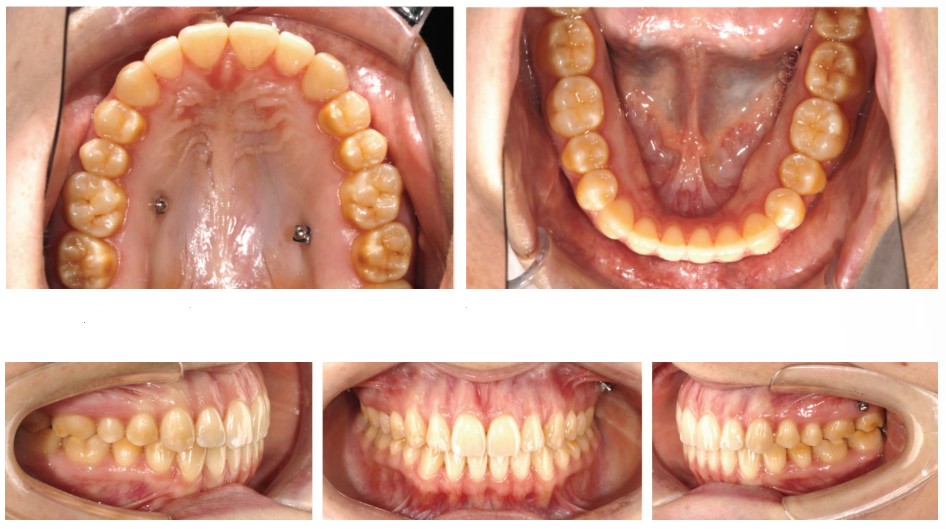Dr. Diego Peydro illustrates his treatment for an open bite patient to improve facial esthetics in a short time.
Dr. Diego Peydro demonstrates treatment for an open bite in seven appointments
Introduction
Over the years, there have been many approaches to treat open bite cases with fixed appliances, but in this case report, I will demonstrate how a complex case with a severe open bite can be treated efficiently. I was able to complete treatment in a short time frame while improving the patient’s experience, avoiding fixed appliances, and keeping facial esthetics in seven appointments with Spark™ Clear Aligner System.
Diagnosis
A 27-year-old female, who was unhappy with her smile, presented with an open bite, periodontal problems, and a narrow and gummy smile. Furthermore, the patient was complaining of having issues with TMJ causing intermittent pain.
The study of her panoramic and lateral cephalometric X-ray revealed that she presented with Class I skeletal pattern. Intraoral evaluation disclosed periodontal problems, healthy gums, molars in normal occlusion, and severe open bite extended to the canine region.


Treatment Goals
The goal was to expand both arches in order to allow the retrusion of upper and lower incisors that were proclined. After that, the next step was the intrusion of the upper molars in order to allow mandibular to under-rotate and close the open bite.
Treatment plan and progress
The patient began Spark treatment in March 2019, completing it in May 2020. The treatment was split into two phases. The first phase consisted of 22 aligners, changing them every 10 days and sometimes every week. The second phase consisted of 19 aligners. During the two phases, there was a refinement. The patient wore the aligners for 22 hours per day, and the treatment was completed in seven appointments. This case was designed with digital 3D Approver software from Spark. Photos show attachments used and amount of IPR.
At the beginning of the first phase, the patient was wearing passive aligners with no attachments, allowing the mouth to get accustomed to this new process. Figures 12-15 show photos of the case using the Spark Approver software.


At aligner 12-13 of the first phase, I placed screws in the upper arch (Figure 21). The combination of the screws and aligners aimed to intrude the molars. The goal was to correct the bite without making any extrusion to the incisors and correct the esthetic of the smile (Figures 23-25).



Treatment results
Orthodontic treatment was completed successfully with the Spark Clear Aligners within 15 months. The open bite was solved with no extrusions, and the occlusion of the patient was satisfactory with molars and canines in normal occlusion, excellent overjet and overbite ensuring that the patient has a very good dental arch and smile line. The support of the lips is obvious, which was reassuring for the patient, since a better smile was one of her main goals. The posttreatment cephalometric radiography shows the skeletal structures and the mandibular plane angle are similar through the whole treatment considering the substantial closure of the patient’s severe open bite. The retention of the treatment was completed with a retainer to ensure the final result of the treatment.
Conclusion
This case report demonstrates how a complex case with a severe open bite can be treated efficiently with Spark Clear Aligner System. The results that I have found with Spark are likely due to its TruGEN material, which has proven to have higher sustained force retention compared to the leading aligner brand, and Spark’s use of the latest in aligner manufacturing technology, which results in better contact surface area between the tooth and the aligner than the leading aligner brand.* With a short time frame improving patient’s experience and avoiding fixed appliances, I was able to keep facial esthetic in seven appointments. I am excited by the success of this Spark treatment and how much easier and quicker they are than what I was previously doing with fixed appliances.
* Data on file with Ormco.
Dr. Michael T. DePascale shows his technique that entails efficient mechanics and improvement of a patient’s facial esthetics in his article “Vertical control and efficiency in treating a Class III malocclusion” here:
https://orthopracticeus.com/vertical-control-and-efficiency-in-treating-a-class-iii-malocclusion/.
Stay Relevant With Orthodontic Practice US
Join our email list for CE courses and webinars, articles and mores

 Dr. Diego Peydro earned his dental degree from the University of Valencia, Spain, and his specialty in orthodontics from the University of Southern Mississippi Institution of Spain. He is codirector of the Clear Ortho International Program where he teaches how to apply the most advanced aligner techniques for optimum results. Published in international orthodontic journals, he is in private practice with his sister, Dr. Marta Peydro, where they receive patients from all over the world to solve complex cases.
Dr. Diego Peydro earned his dental degree from the University of Valencia, Spain, and his specialty in orthodontics from the University of Southern Mississippi Institution of Spain. He is codirector of the Clear Ortho International Program where he teaches how to apply the most advanced aligner techniques for optimum results. Published in international orthodontic journals, he is in private practice with his sister, Dr. Marta Peydro, where they receive patients from all over the world to solve complex cases.
